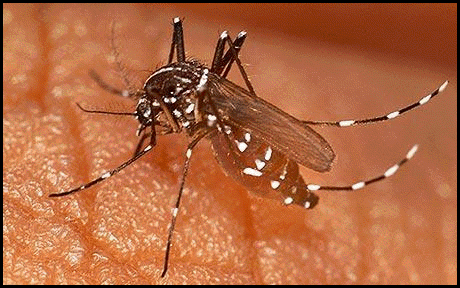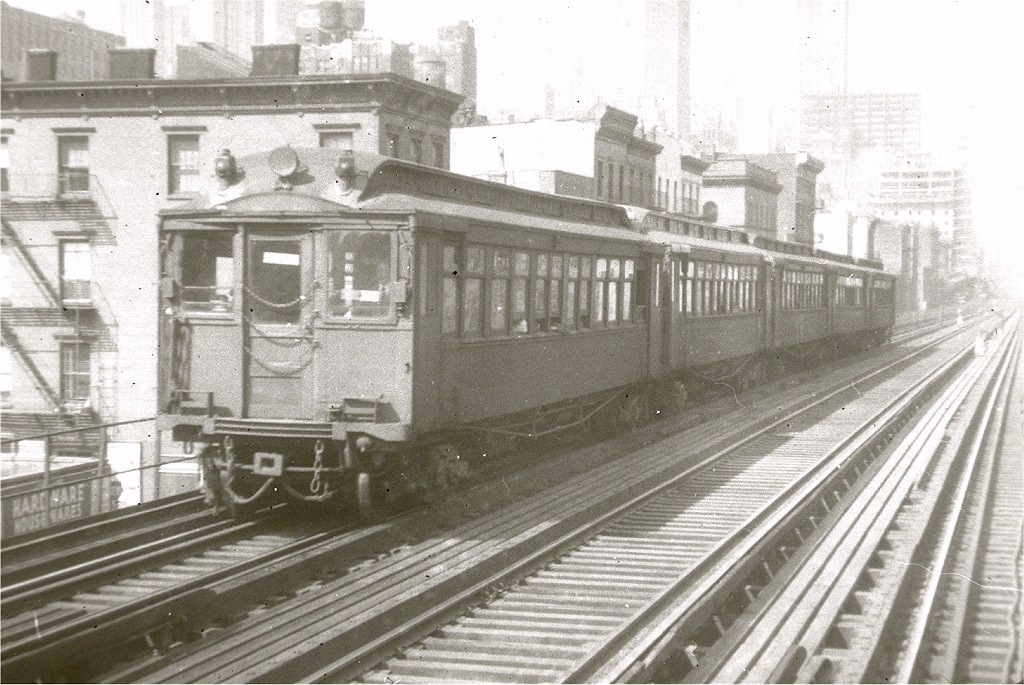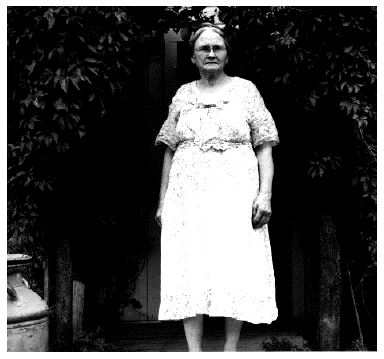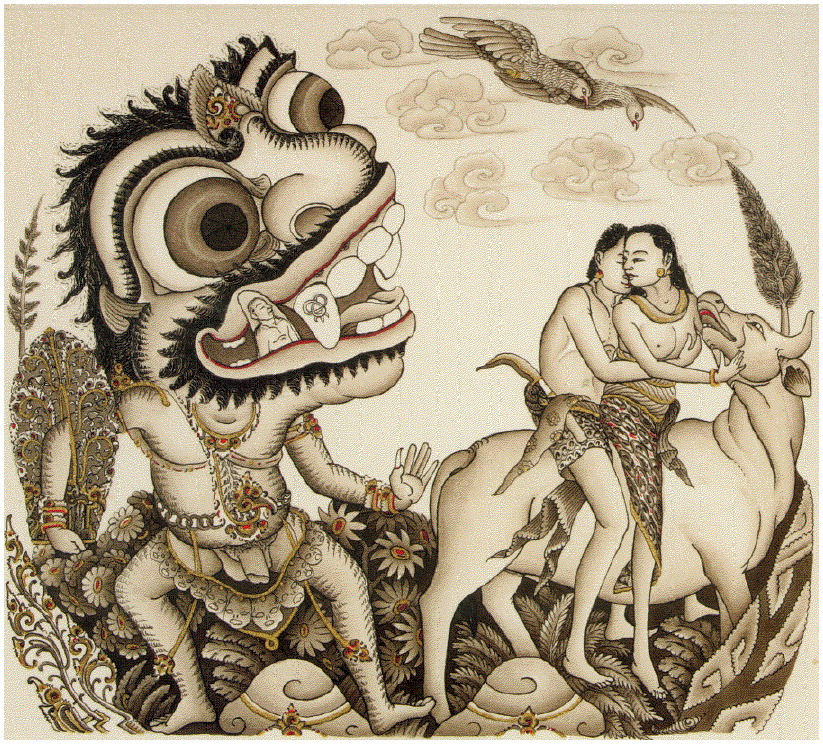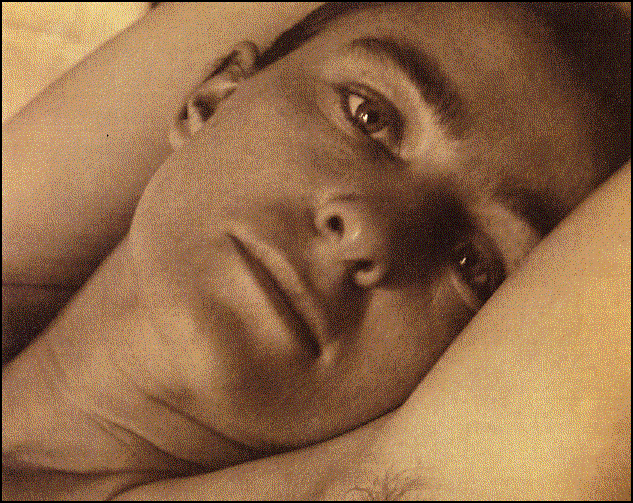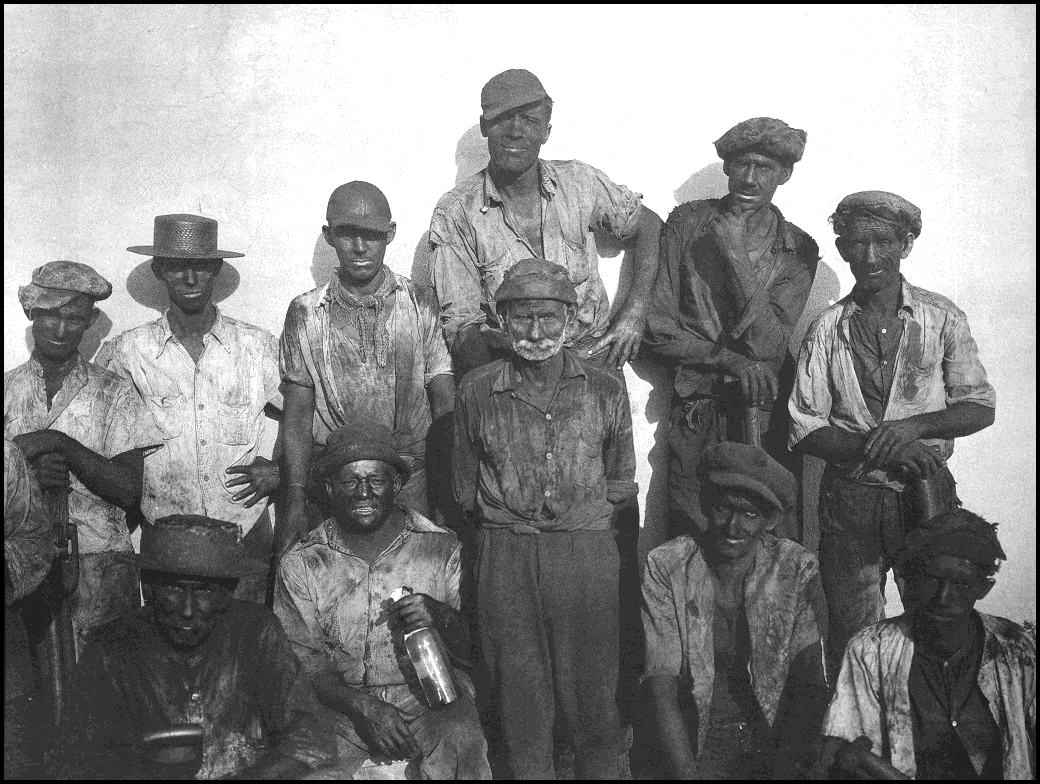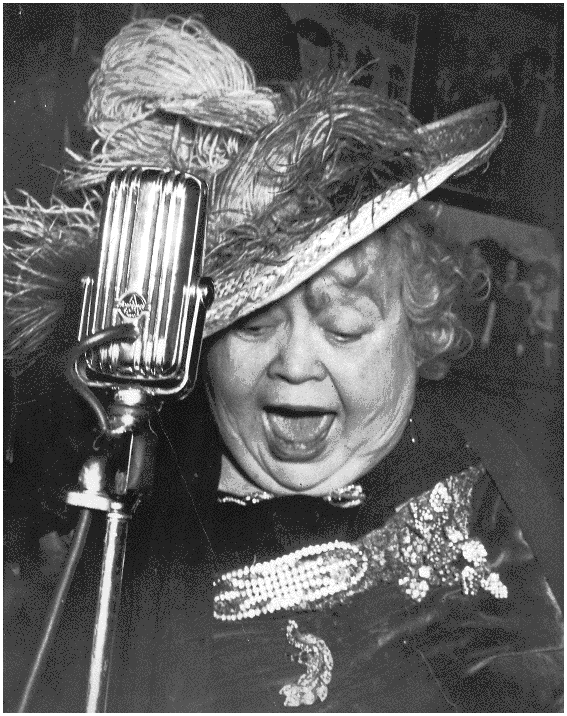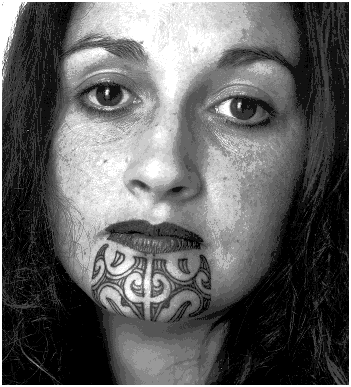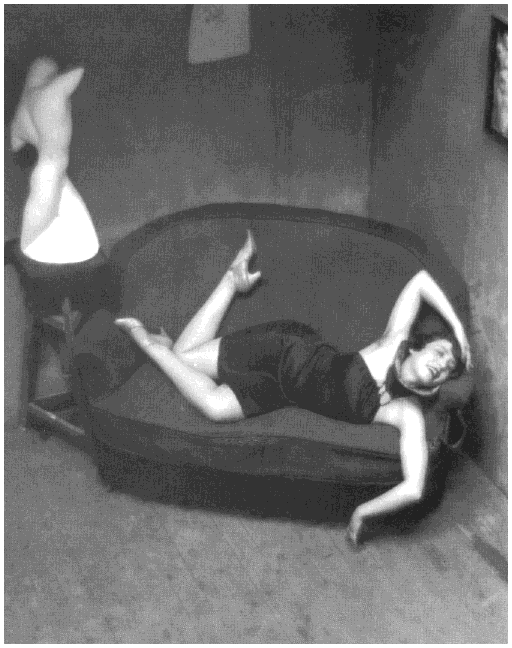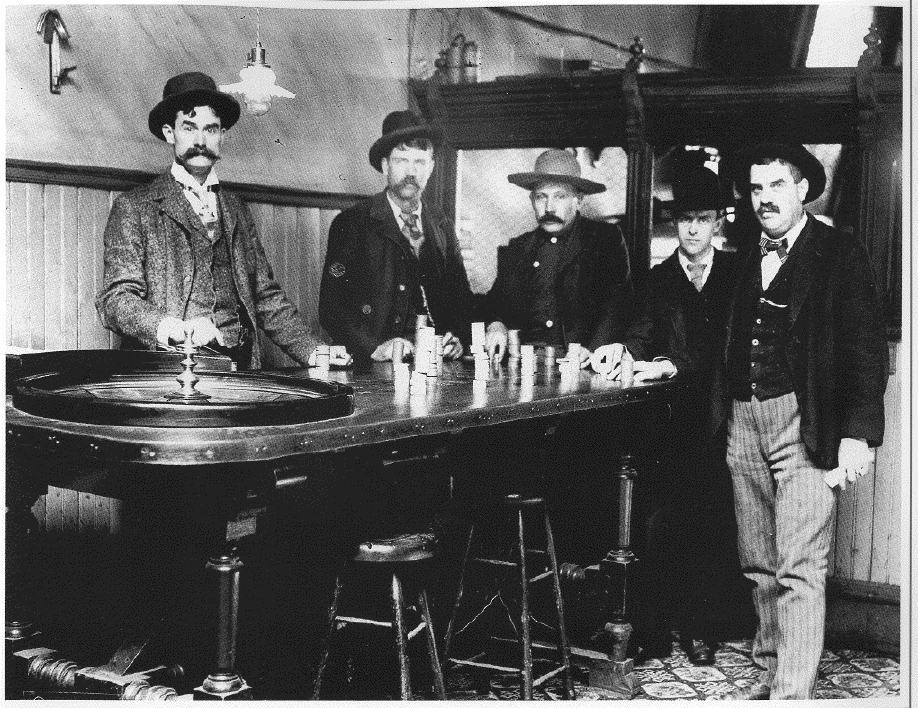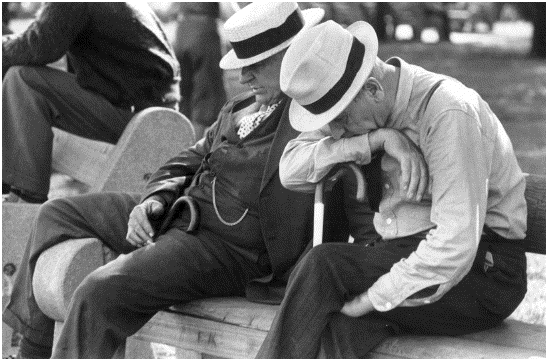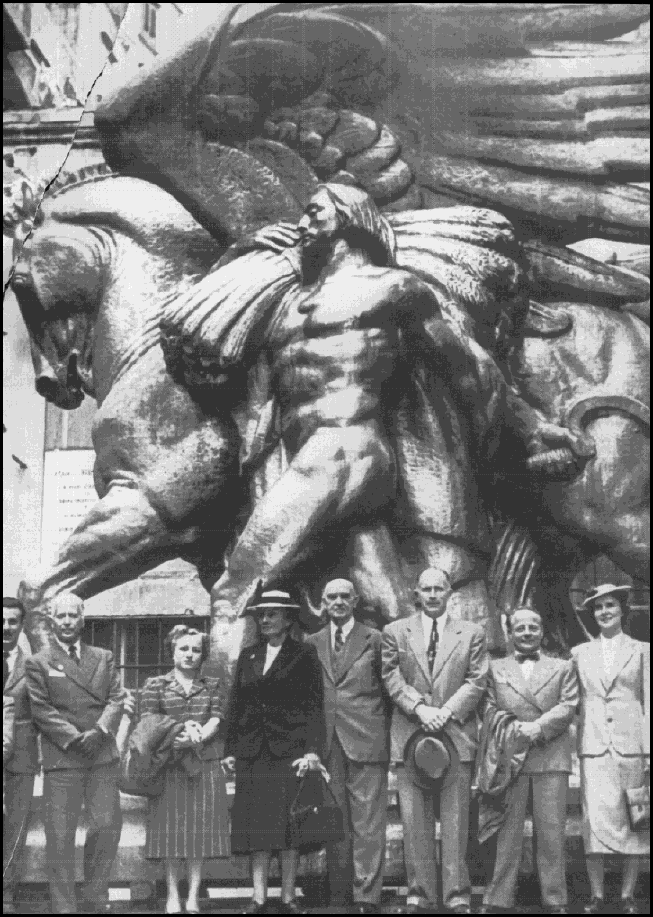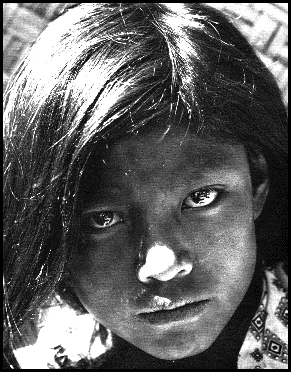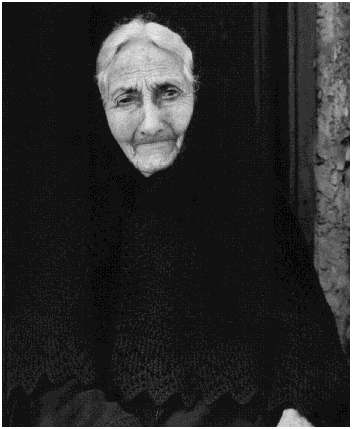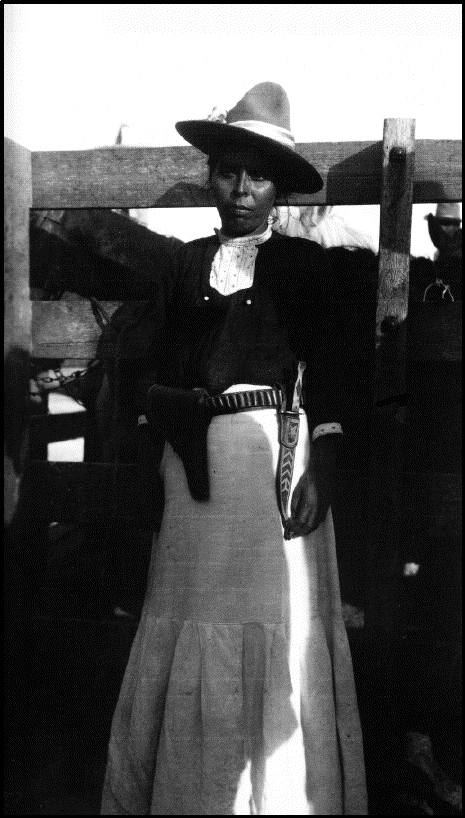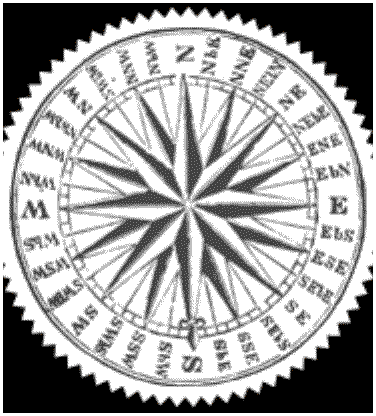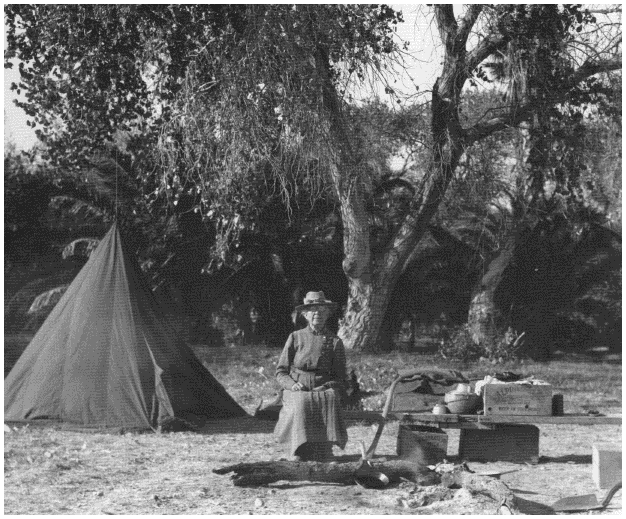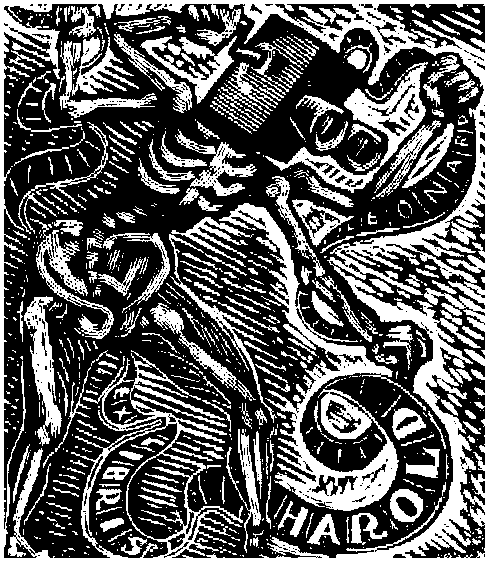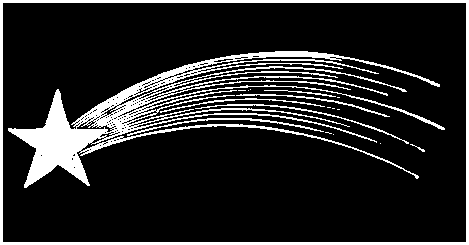an inordinate amount of time
fussing over design, layout,
typestyle and background color,
rounding up dozens of notable photographs,
droll illustrations, freakish cuts and
delicate drawings that offer
appropriate counterpoint to our written words.
Owls
Cynthia Berger
(Stackpole)
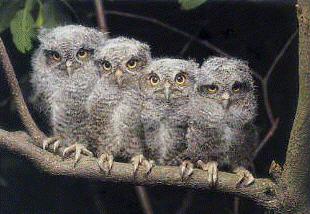
Research by psychologist Norman Li has revealed that besides full lips and soft skin, the one element that makes children and other animals attractive to the rest of humanity is the relative size of their eyes. Thus marsupials (or babies) with squinty eyes are less endearing than, say a Burmese cat or a Cocker Spaniel (or Paris Hilton).By this logic, owls should be the most lovable of them all, but after reading Cynthia Berger's catalogue of their eating and living habits, I think you'd be better off with a lemur or a platypus.
Take your typical strigiformes diet. Gopher stew. Voles on toast. Lemming squash. Nuthatch fricassee. Duckling soup. Moth paste. Cats flambé. And, yuck, the common dung beetle.
According to Ms. Berger, the Burrowing Owl goes about the prairie picking up "cowpies, horse manure, dog dirt, whatever" and "arranges the smelly treasures around the entrances to their burrows." They also line the inner walls of their little cellars with this crap.
Some nosy scientists thought they were dragging this foul mess home to fool their predators, who would leave off digging in and stealing their eggs because it all was so revolting. Not so. The Burrowing Owl has a vast appetite for dung beetles. Dung beetles go to, well, where the shit is. It's a drive-in restaurant for the owls, except instead of going through the golden arches to get a hamburger, the hamburger crawls up to your front door. In case you have a fondness for crunching beetles, this is an ideal arrangement.
Owls also are addicted to eating rats and mice. And they don't just tear them apart: When the Barn Owl catches a mouse, it "just swallows it head-first ... no dainty small bites."
Go to the
complete reviewThe Making of a
Tropical Disease
A Short History of Malaria
Randall M. Packard
(Johns Hopkins)The facts of malaria are simple and simply appalling: it infects 225,000,000 people, worldwide, annually. The mortality rate is 800,000 people a year ... mostly in sub-Saharan Africa where 90% of cases occur. It can be cured ... if you have the money and the medical help (Packard was infected in Mulanda, Uganda, but with professional treatment, is still with us).At one time malaria could be held at bay with atabrine or chloroquinine, but that is now less a choice, as all the four varieties of Plasmodium are showing increasing resistance. The usual ways of protecting the poor --- and it is a disease of the poor --- include draining sources of standing water (buckets, jars, cans, pottery and, increasingly, abandoned automobile and truck tires) and a simple net hung over cribs and beds.
Under various government-sponsored efforts in Zambia and Uganda, ITNs (insecticide-treated bed nets) cost $5, an impossible price for the impossibly poor, but recently, through a subsidization program, they've been offered to the poverty-stricken for 60¢. Thus, for example, if we took 1% of the monies we spend each month in the border to chase off the Mexicans who merely want to work here and bought 1,000,000 mosquito nets and sent them to Africa we would probably save a gadzillion lives a month and the world might like us a little bit more, too.
Go to the
complete reviewThe World on Fire
1919 and the Battle with Bolshevism
Anthony Read
(Norton)
- Communism's Third International, set for Moscow in 1919, was so poorly attended that Lenin rounded up foreigners from the neighborhood just to get some warm bodies. Henri Guilbeaux had been expelled from Switzerland and knew nothing of the meeting until "Lenin personally knocked on the door of his hotel room and invited him to attend and make a speech."
- John Maynard Keynes, at the Paris peace talks, was convinced that Herbert Hoover was working vigorously to feed the starving because he had bought "abundant stocks of low-grade pig products at high prices which must at all costs be unloaded on someone, enemies failing allies." Keynes opined that when Hoover slept at night, "visions of pigs float across his bedclothes."
Read reports that the Ku Klux Klan was revivified in 1915 in Atlanta, by a W. J. Simmons, "a fundamentalist preacher and former Methodist circuit rider." The Klan bible was called the Kloran.
- In June of 1919, the Germans had still not signed the onerous treaty cooked up by Clemenceau and Lloyd George. The French, English, and Americans stood ready to resume the war, "to start the invasion at 5 a.m. on Monday 23 June." Only a last-minute decision by the German military, stating that it could no longer fight, brought the issue to a close.
- Attorney General A. Mitchell Palmer believed that Russian aliens in the United States were directly controlled by Trotsky and Lenin. "Out of the sly and crafty eyes of many of them leap cupidity, cruelty, insanity, and crime," he said. "From their lopsided faces, sloping brows, and misshapen features may be recognized the unmistakable criminal type."
- The first meeting of the Bolsheviks was held in 1903 in "an angling club in London." Even though they were in the minority, Lenin called them bolshevik which means "in the majority." And even though the others were in the majority, he dubbed them mensheviks ("in the minority.") Later, a great writer would refer to this as "doublespeak."
Go to the
complete reviewRiding the D-Train
Enid DameNotice the rooftops,
the wormeaten Brooklyn buildings.
Houses crawl by,
each with its private legend.
In one, a mother
is punishing her child
slowly, with great enjoyment.
In one, a daughter
is writing a novel
she can't show to anyone.Notice your fellow riders:
the Asian girl chewing a toothpick,
the boy drawing trees on his hand,
the man in a business suit
whose shoes don't match.Everything is important:
that thin girl, for instance,
in flowered dress, golden high heels.
How did her eyes get scarred?
Why is that old man crying?
Why does that woman carry
a cat in her pocketbook?Don't underestimate
any of it.Anything you don't see
will come back to haunt you.--- From Broken Land
Poems of Brooklyn
©2007 New York University PressTwentieth Century
United States
Photographers
A Student's Guide
Kristin G. Congdon
Karas Kelley Hallmark
(Greenwood Press)Well, we can certainly see including Ralph Eugene Meatyard and his funny masks, and Lee Friedlander with his slightly off-center faces of supposedly normal people.There could be no doubts about the classicists: Dorothea Lange (Fig. 1) and the other historical figures ... the earliest being Edward Steichen (b. 1879), Edward Weston (1886) and the pioneer of American photography, Alfred E. Neumann --- I mean, Alfred Stieglitz (1864) --- although his shot of Georgia O'Keeffe offered in the book is neither his most memorable nor his most admirable.Margaret Bourke-White turns up with all her repeatable machines, as does Imogen Cunningham with photographs of photographers. The youngest of the seventy-five artists represented in this volume is Anna Gaskell (b. 1969) ... second being Meghan Boody with her rather silly made-up fin de siècle shots of Psycho and Smut.
Some of these folks we've never heard of. Have you? There is Martha Rosler who drives around taking shots of freeways and airports (yawn). Someone named Joel-Peter Witkin who shows some really weird folk in embrace or on show (he gets three pix; most of the other artists get one). Jan Groover who is fond of shots of kitchen utensils and who "made a series of digital photographs using a color inkjet printer to create pastel prints."
Go to the
complete reviewPioneers of
Balinese Painting
The Rudolf Bonnet Collection
Helena Spanjaard
(KIT Publishers)The artist Rudolf Bonnet left the Netherlands for the South Pacific in 1929, and was to spend the most of his life in Indonesia collecting "modern" Balinese art. He ended up with over a hundred paintings, of which sixty-two are nicely presented here, along with another thirty-eight photos and drawings. I would like to reproduce at least half of these here because they are gorgeously conceived, elegantly reproduced, and represent astonishing artful balance and subtlety.But that would mean me laboring fuming over my 1912 vintage wood-burning scanner for the rest of the day (or for weeks), wanting to toss it out the window because, like me, it has turned cantankerous and stupid, likes to trip me up by cooking up new requirements for getting an even, straight and not washed-out reproduction, free of blotches and wrinkles (like me). If you think I am going to go through this even for such breathtaking Balinese art, you got another think coming.
Go to the
complete reviewAND HERE ARE
A DOZEN MORE
WE LOVED AND
POSTED LAST DECEMBERStieglitz
Steichen
Strand
Masterworks from the
Metropolitan Museum of Art
Malcolm Daniel
(Metropolitan Museum of Art/
Yale University Press)Alfred Stieglitz and Edward Steichen were the two true geniuses of early twentieth century photography, creating what some might think of as the Art School of American Photography. Their works often included misty shots on pale swirls of naked bodies against dark backgrounds; bodies, often, floating there with washed-out edges, vague patterns off there in the distance, the very objects that others de-emphasized in early photography (sharp focus, sharp features, formidable contrast).Stieglitz was also fond of clouds, would photograph them and give them filmy titles like "Music No. 1" or "Equivalent." He was also a bit unfocused on the subject of Georgia O'Keeffe (aren't we all?): he loved her much too much (don't we all?) and lived with her much of his life when he wasn't fighting with her or at war with the other important photographers in America.
O'Keeffe might well have been included in the title of this book because Stieglitz took over three-hundred photographs of her during his long career. Sixteen are included here, including her face, hands, feet (pretty gnarly), toes, breasts (beautiful), backside, frontside (gorgeous!), throat ... with several additional pictures of her staring at the camera (and the photographer) (and us) and doing her hair, caressing the hubcaps of her Ford V-8 and ... also ... fondling a horse skull. Which is OK by me because I have always found the camera art of her body and her personality far more engaging than those strange paintings of flowers looking more like intimate body parts than tulips and begonias.
Go to the full
review
Cuba:
Art and History from 1868 to Today
Moraima Clavijo Colon (Curator)
Nathalie Bondit (Director)
(The Montreal Museum of Fine Arts/
Prestel)The editors have arbitrarily divided Cuban artistic history into five sections, which more or less follow the political fortunes of that benighted island. The first is "Depicting Cuba --- 1868 -1927," 1868 representing Cuba's first spasm of attempted Independence from Spain, the Ten Years' War, and the successful revolt that lasted from 1895 to 1898. The photographs of the Ten Years' War were commissioned by the colonial authorities for the "Album Histórico Fotográfica de la Guerra."The second part is titled "Arte Nuevo" and "the Re-creation of Identity" (whatever that means), and parallels the ruinous regime of Gerardo Machado y Morales. "Cubanness," roughly parallels that reign of Fulgencio Batista (1938 - 1959). "Within the Revolution" would, naturally, be concurrent with Castro. "The Revolution and Me" concludes it all between 1980 - 2007.
Twenty-one critics take on thirty-four essays in cinema, fine arts, photography, and literature. I am left with the conclusion as I often am in massive books of art like this that the editors have drafted experts to comment on various aspects of art, knowing that words are just words, and the ultimate reward for the consumer are (in this case) the bleak, or gorgeous, or gaudy, or subtle, or flamboyant pictures. Ads for the Tropicana Club (vulgar) are interspliced with wonderful photographs by Raúl Corrales and Ocaño Odio of the poor sleeping on the streets of Havana.
A painting by Carlos Enríquez called "The Happy Peasant" (1938) seems to echo the "Screaming Pope" of Francis Bacon. The thirty photographs by Walker Evans include a haunting shot of eleven dockworkers, faces black from their job of loading coal at the malecón at Havana. The accompanying essay by Jeff Rosenheim, "Walker Evans and The Crime of Cuba" --- referring to a book put out by J. B. Lippencott in 1933 --- is one of the few I could make it through without passing out (or on).
Go to the full
reviewWeegee
Photographs from the
J. Paul Getty Museum
Judith Keller, Editor
(J. Paul Getty)Weegee, they say, stole his name from the Ouija ... like the one that talked to my poor old Mum. That's how you pronounced it (Ouija was thought up by one William Fuld in 1892. In those days, it was known as the "Talking Board.")Weegee's real name was Arthur Fellig. But he took on "Weegee" starting in 1935, in New York City, because whenever there was a tenement fire, a shooting, a drug bust, an accident --- anything with gore or scandal --- he was johnny-on-the-spot with his huge Speed Graphic and flashbulbs, taking the pictures before anyone else arrived.Weegee was a parasite, a creature that fed off the pain of others --- perhaps creating some of his own (how would you like to get out of the police car and have a big old guy with a cigar flashing bulbs in your face, fixing your image for a million readers worldwide?) In fact, from this book, now we know who it is that got the quick shot through the windshield, a photo of the woman who has just smashed into a truck and killed the driver. Now we know who it is who snapped the picture of a gorish body, a cop standing over it, dazed, pistol in hand. It was Weegee who put his huge lens right up to your face as you look down for the first time at the body of your late husband shot down in the middle of Flatbush Avenue. And, in the two photos of him included in this volume, not a hint of shame on his puss --- he was just doing the news, right?
He was a parasite, at a time when we romanticized parasites and Runyonesque characters who boozed it up and beat each other up, getting vengeance with a black-jack or a pistol, and --- if caught --- hiding behind a hanky or a black fedora. Weegee, the wonder with his Speed Graphic, was always there, right in the thick of it, behind the ambulance or there the moment the Black Maria arrived at the police-station ... low-lifes prodded out to get their mugs shot by the omnipresent, untouched, untroubled Weegee ... before the other mug-shots.
Go to the complete
review
Moko Maori Tattoo
<Hans Neleman,
Photographer
(Edition Stemmle)In The Piano, that delicious, dramatic movie that presented us with another startling view of 19th-century colonialism, the Maori of New Zealand are always in the background: carrying the piano, the luggage, working --- but it is a bizarre (and uncommented on) background. Their faces are graved with lines, designs, figures --- permanent line drawings on the skin that emphasize or contrast the shape of eyes or nose or mouth, and contrast sharply with the mostly pale-white ghostly faces of the colonialists. Ta moko is the traditional facial decoration of those of Aotearoa, New Zealand. The authors of Moko --- Maori Tattoo tell us that it is not only tattoo,
It is also a name used for lizards throughout Polynesia, and it carries all the mythical associations attached to such creatures...
It was inevitable that the Christians who invaded the island three hundred years ago should attempt to ban the process, since it was an homage to the Maori divines.Ta moko was kept alive by older women who lived in remote areas beyond the pale of European condemnation. In the 70s, young urbanized Maori in search of powerful symbols of ethnic identity rediscovered the art, and moko found a new generation of skin.One guide, who assisted with this volume, said that with his moko, "I will never pretend I am white again." Indeed, many of those who appear in this book do not see themselves as "exotics" or "natives." There are students, workers, soldiers, and businessmen and most, apparently, are deeply religious. Statements that accompany many of these photographs are Maori translations of passages from the Bible --- hinting that an ingrained ancient culture has merged, to an astonishing degree, with the Christian.
Go to the full
review50 Photographers
You Should Know
Peter Stephan
John Gabriel,
Text Translator
(Prestel)We all know Matthew Brady, Alfred Stieglitz, Edward Weston, Henri Cartier-Bresson, the publicity conscious Richard Avedon, the in-your-face Robert Mapplethorpe.But how about Seydou Keïta? Malick Sidibé? Hiroshi Sugimoto? Wolfgang Tillmans?
I suspect the toughest task in putting out a volume like this is not what you include but what you don't. How about Brady's dead confederate soldiers, asprawl in the fields of Antietam? Should the rightly famous stark beekeeper by Avedon be in or be out? Dorthea Lange's "Homeless Mother?" or "White Angel Breadline?" Robert Capa's soldier flinging back his rifle on the fields of Spain during the civil war? How do you pick-and-choose, especially, when we know that the last three probably, between them, fielded hundreds of thousands of shots? The volume of material available but not to be included should drive any sane editor to the edge of distraction.
Rather than give us an exhaustive history of photography early and late Peter Stephan has chosen to give us an overview. He has the advantage of the cut-off number --- only fifty masters --- along with the natural limitation of his working space (13"x13"). He has --- through the publisher --- had access to superb reproduction from the firm Druckerei in Germany.
The layout is perfect, and is perfectly managed. Each of the masters is presented with timeline at the top of the page, one large representative photograph to the left, brief succinct essay to the right, 2"x2" photograph of the photographer (how do you shoot the one who shoots us?) and chronology. Where and when was André Kertész born (Budapest, 1894)? Where did he show (Paris, New York)? What did he publish (From My Window, Hungarian Memories)? When did he die (1985)? Are there any other books about him? (Yes, at least two).
All this information is presented in modest agate type because you and I know that the payoff here are the photos: in Kertész' case, three large, two small. Indeed, he sports more than most: Stieglitz only gets three ... one of Georgia O'Keeffe (naturally --- one of the 350 of her because Stieglitz and O'Keeffe were sweeties).
Go to the complete
review
The Klondike Quest
A Photographic Essay: 1897 - 1899
Pierre Berton
(Boston Mills Press)There were three ways to get to Dawson in 1898: up the White Pass Trail, up the Chilkoot Trail, or down the Yukon River from Alaska. It is estimated that 80% of the stampeders went via the passes, the other 20% by way of Alaska.The impetus, according to Berton, was not so much gold fever as the fact that the United States was --- in the midst of the so-called "Gay 90's" --- engulfed by a panic. That was the word in those days for what we now name "economic depression."
There was nothing gay --- in the older sense of the word --- about the journey. The White Pass was called "The Trail of Dead Horses" because 3,000 horses died en route. Chilkoot Pass was scarcely better. But the worst impediment to the stampeders was not so much the weather, which was dreadful, nor the passes, which were almost impassable --- but the Canadian government.
Go to the full
review
Long Time Coming
Photographic Portrait
Of America: 1935-1943
<Michael Lesy, Editor
(Norton)The Farm Security Administration photography division was charged with taking pictures of all of America ... the farms, the cities, the markets, the streets, and most of all, the people. In its eight years, the FSA compiled 145,000 photographs, all in black-and-white, with sixteen full-time artists out on the road, including such worthy visionaries as Ben Shahn, Arthur Rothstein, Dorothea Lange, and Walker Evans. The man in charge of this was Roy Stryker --- one who, Lesy tells us, was not much of a connoisseur of photographic art, but a man who was an artist at what was important then and now in Washington --- of maintaining the funding and finding ways of doing what needed to be done without bringing down the wrath of the elected officials on your shoulders.
Included in Long Time Coming are directives, letters, and notes by Stryker to and from those who were working on the FSA project. And a very strange collection of marching orders they are, too. This from 1937 to photographer Arthur Rothstein: "Where are the pictures of the corn town?... Here are special things you ought to watch for now. Raking and burning leaves. Cleaning up the garden. Getting ready for winter." Or this to Russell Lee in Corpus Christi, Texas:
Every so often, I am brought to the realization of the ruthlessness of the camera, particularly the way we have been using it: A lot of those people whose pictures you took do not realize how they are going to look in the eyes of the smug, smart city people when these pictures are reproduced. Of course, we could turn around and put the camera on the smug, smart city people and make them look ridiculous, too.
The thrust of the narrative portion of this book is that most of the people involved --- including Stryker and his immediate superior, Rexford Tugwell --- didn't know what the hell they were supposed to be doing. Were they to show the bright side of American life? Or, as so often happened, were they to present to the world the dismal and depressed, the rootless, the poor, the hurting. We find in the work of Lange and Evans and John Vachon and Russell Lee the most appalling, fly-specked, belly-rumbling, shirt-torn, sad-eyed, bent-backed misery. At the same time, we have here sections with titles like "Amusements and Distractions," "Hometowns," "City Life" which convey the most ordinary of lives and pleasures and normalcy --- people hanging out, kids dancing in the streets, old people at fairs, the obviously well-off at the races, four grannies playing bridge in White River Junction, Vermont, a girl swinging next to the street in Woodbine, Iowa, a boy selling newspapers in Montrose, Colorado.
Go to the full
reviewWashington
Sculpture:
A Cultural History of
Outdoor Sculpture in
The Nation's Capital
Hames M. Goode
(Johns Hopkins)Editor Goode tells us there are over 500 outdoor sculptures in Washington, D. C. although at times it may seem like there are many more. He is generous, though, for he not only includes the equestrian statues and those national heroes with swords and busts, he brings in cemeteries, inner courtyards, hidden nooks ... and parts of Virginia and Maryland, too.They are gathered in this definitive volume, all are given at least one picture (sometimes several angled shots) and the whole weighs in at a ton or so (the book, not the busts). Washington Sculpture runs almost 800 pages.
It's a heroic effort and it is hard to stop leafing through it to see what other silly figures are to be commemorated in the traffic circles, parks, courtyards, sidewalks, cemeteries ... and sometimes right out on the city streets. One is tempted to try to make sense of all these colonnades and fountains and memorials and the only way I could figure out to do it was to list them by official scientific category:
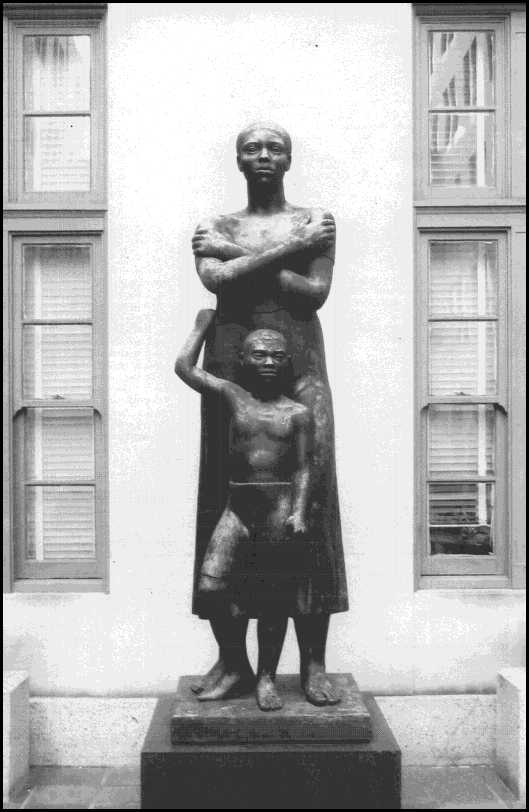
- NICEST #1: The Angel Moroni (Mormon Church, Kensington, Maryland). Who would ever believe that the Latter-Day Saints, well known for their sacred overbuilding, could ever come up with something graceful ... but Moroni, complete with trumpet, perched atop one spire, manages to do it, nicely.
- NICEST #2: "Negro Mother and Child" (Department of the Interior). This is six-foot-high statue is one of the great WPA commissions, executed by Maurice Glickman in 1934. .
- NICEST #3: Braque Bird (The Phillips Gallery). Low-relief carving, flying along over the entrance.
- MOST SPOOKY #1: The National Law Enforcement Officers' Memorial (Judiciary Square). A definitely malevolent eight-foot-long lion about to spring on two cubs playing on the other side of the fountain.
- MOST SPOOKY #2: The Hardon Monument (Rock Creek Cemetery). A sleeping (or possibly deceased) cherub resting on the slab of a carved rock.
- WEIRDEST #1: Temperance Fountain (Pennsylvania and Indiana Avenues). The "open temple" is topped with a single anorectic bird, apparently a crane. These temples, to be found in various cities, were donated by prohibitionist Henry Cogswell. They contained a drinking fountain so people "would be able to quench their thirst with its refreshing water rather than intoxicating liquors."
- WEIRDEST #2: A Salamander, atop the turret on the Christian Heurich House (New Hampshire Avenue). Heurich was a brewer, and this one seems to be the result of a few nights (or years) out on the town.
- MOST EYE-POPPING: Bust of Francis Scott Key (Francis Scott Key Park). His eyes seem to be popping right out of his head ... perhaps a result of all those bombs bursting in air.
- UGLIEST #1: The Expanding Universe Fountain (The Foreign Service Court). A weirdo, arms outstretched, planted atop a ten-foot globe.
- UGLIEST #2: Boy Riding Goat (Agriculture Department Building). Now, thank god, removed (sometime in 1930), perhaps for sheer sentimental balderdashery.
Go to the full
review
TWENTY-
THREE
HITSIn the fourteen years we have been in business, RALPH: The Review of Arts, Literature, Philosophy and the Humanities has reviewed over 2500 books, published more than 500 poems, and put on-line a thousand or so readings and articles. Some of these have faded into oblivion, but others --- because of the books or authors or the writing (or divine intervention) --- have continued to turn up regularly on the hit list provided by our server. Below, you can find twenty-three of those most favored by our readers.
Highwire
Moon
Susan Straight
(Houghton Mifflin)I am as willing as the next man to admit that the life of the "indocumentados" is a tough one. I will not gainsay that there are disasters in finding work and love and dealing with prejudice and death and disaster and drugs on the border. But my take on that world (and the world of novels) is that these things are (or should be) parsed out a bit.For their lives can be terrible and remorseless and soul-destroying, but there are also moments --- at least in the lives of the people I know who live in that world --- of joy and life and fiesta and music and poetry.
If Straight wants to see that world as nasty, drug-infested, and brutish --- that is her choice. If she wants to stick in a set of improbable deus ex machinas (the shy Serafina trying to drive a car; two cops ignoring her heartfelt gestures towards her baby; Larry the bum somehow finding his daughter; Oaxacan Granny somehow finding Serafina in Tijuana --- pop. 2,000,000) that, too, is her choice. But if she wants to put it between covers and call it art, we have to demur.
Go to the
complete review
Paul Strand
Photographs from the
J. Paul Getty Museum
Anne M. Lyden
(J. Paul Getty Museum)In his long life, Paul Strand was comfortable photographing machines, faces, naked bodies, old men and women, and the people and buildings and farms of France, Italy, Scotland, Canada. He spent sixty years learning his craft from the likes of Lewis W. Hine and Alfred Stieglitz, hanging out with artists like John Marin and Georgia O'Keeffe.He also spent several years making films in Mexico, working for the Mexican Secretariat of Education. Which, along with his other neo-socialistic activities, is probably what got him in trouble with the House Un-American Activities Committee. Such that Strand got out of the United States in 1950, moved to live permanently in southern France. (One can't help thinking of this period being notable in that we threatened our best artists with jail time so they'd get gone: Charlie Chaplin, Vladimir Nabokov, Berthold Brecht, Paul Strand, the Hollywood Ten. Keeps the country safe from untoward criticism; separates the supposed traitors from the supposed loyalists).Less than a third of the 186 black-and-whites Strands owned by the Getty are shown in this book, and we have chosen three of them for viewing here because they are, as the juveniles would say, awesome.
One is of Kate Steele from the Hebrides, 125 years or so of age. She comes to us three times. She's on the cover; she turns up on Plate 44. Finally there is a photo of a photo (of a photo ... it's all copies: there is no reality, even in the world of photography.) This last shows Strand hidden by his huge camera, the sweet toothless old granny sitting in the doorway, awaiting her fate (or her upper plate), complete with daughter off to one side and cat looking at camera #2, the one that is making the picture of the picture. The only soul made nervous by all this except me seems to be the cat, who might be preparing to run up Strand's leg any moment now.
Go to the
reviewJack London
Photographer
Jeanne Campbell
Reesman et al,
Editors
(University of Georgia Press)In his forty or so years on earth, Jack London proved to be an indefatigable roustabout. Not only did he write five novels, dozens of short stories, articles and essays for newspapers and magazines ... all the while he was traveling to such exotic places as the Solomon Islands, Bora Bora, the Marquesas, and even Korea (to report on the Russo-Japanese War).He was also stomping America on behalf of Socialism and, meantime, built his own sloop --- the Snark --- and sailed with it and a crew of eight to the South Pacific. And he managed a 1,000 acre ranch in California, lived stylishly, paying for it all by means of a steady stream of books, stories, sports stories, didactic writings, and war reports.
Now, we find, on top of all that, that, from 1903 until his death (in 1916), he took, developed, and printed over 12,000 photographs, using a simple bellows folding camera --- the Kodak 3A. Jack London, Photographer, offers 200 of his pictures, including a few bemused ones of Jack London. He proves to be a handsome fellow, with a shock of dark hair, an endearing smile ... appearing to be every bit of a real charmer, not that much different than a young, roguish Jack Kennedy.
Go to the full
reviewLet Us Now
Praise Famous Men
James Agee
Walker Evans
(Houghton Mifflin/Mariner)Agee has set out to bring us into this world, and he does it with a vengeance. It is apparent that he is trying to do with words what companion Walker Evans did with the sixty-four pages of photographs that appear in this volume.In addition to what some might call the excesses of description --- the exact shape and feel and color and texture of a pair of overalls take the better part of a page --- we have precise word-pictures of three families, their children, their houses, the rooms, the furniture, the walls, the chicken coops, the land, the land under the houses, the roofs of the houses, the feel of the sun, the heat in the kitchen, the dying trees, the dust, the withering crops.
In the hands of a lesser writer, these could be dumb beyond belief; in the hands of this poet --- for he is a poet, and a musician --- they often take surprising turns that pull one in. To those of us who have lived in or at least visited this part of the world, the prose brings back a flood of sensual memories. Here is the single dresser in the Gudger's shack:
The bureau was at some time a definitely middle-class piece of furniture. It is quite wide and very heavy, veneered in gloomy red rich-grained woods, with intricately pierced metal plaques at the handles of the three drawers, and the mirror is at least three feet tall and is framed in machine-carved wood.
So far, so good --- we know that bureau, and we have seen the likes of it. Now Agee will personalize it:
The veneer has now split and leafed loose in many places from the yellow soft-wood base; the handles of the three drawers are nearly all deranged and two are gone; the drawers do not pull in and out at all easily.
Not only has he given our bureau age and substance --- he has plopped in a word that almost sounds out-of-place (drawers that are "deranged") but which, as we continue, turns perfect, the necessary connotations of crazy, undisciplined, askew:
The mirror is so far corrupted that it is rashed with gray, iridescence in parts, and in all its reflections a deeply sad thin zinc-to-platinum, giving to its framings an almost incalculably ancient, sweet, frail, and piteous beauty, such as may be seen in tintypes of family groups among studio furnishings or heard in nearly exhausted jazz records made by very young, insane, devout men who were to destroy themselves, in New Orleans, in the early nineteen twenties.
Go to the complete
review
Past Tents
The Way We Camped
Susan Snyder
(Heyday/
Bancroft Library)Susan Snyder takes us back to the halcyon times of early camping. She opines that it was slow to catch on in America because in the 19th Century, camping was all there was. When you wanted to get from West Virginia to Missouri, and from there to Oklahoma, and from there to the Nevada Territory and California, you camped your way across the country.Sleeping under the stars and cooking over an open fire had been matters of necessity and expediency in trackless wastes that concealed wild beasts and nightmare sounds. Wilderness had been the formless enemy to be conquered and crossed at all costs.
"Now," she writes, "the trailblazers became pleasure trekkers, and trails that had been the routes of arduous travail become the paths of holiday jaunts."
Ms. Snyder has collected here over a hundred photographs to delight the soul: people dressed to the nines, posed formally outside their white-and-blue striped tents; three young fellows on high-front-wheel bicycles of the times, their packs carefully hung from the steering bar; a booted ruffian in a pork-pie hat standing before a wood-plank lodge marked WELLS FLAT; a "Silver Dawn" Sauerkraut can cut at both ends to serve as smokestack.
She has also culled readings from camping books of the day, advertising copy from the magazines filled with hints ("To dry matches: Carefully blot off as much water as possible with a soft cloth and then pass them through the hair a dozen times"), and clippings from those who ventured out into the wild:
"We ate our supper of cold venison and bread, and whittled from the sides of the wooden barometer-case shavings enough to warm water for a cup of miserably tepid tea, and then, packing our provisions and instruments away at the head of the shelf, rolled ourselves into our blankets and lay down to enjoy the view."
After such fatiguing exercises the mind has an almost abnormal clearness: whether this is from within, or due to the intensely vitalizing mountain air, I am not sure; probably both contribute to the state of exaltation in which all alpine climbers find themselves.
This entry by geologist Clarence King concludes: "The solid granite gave me a luxurious repose."
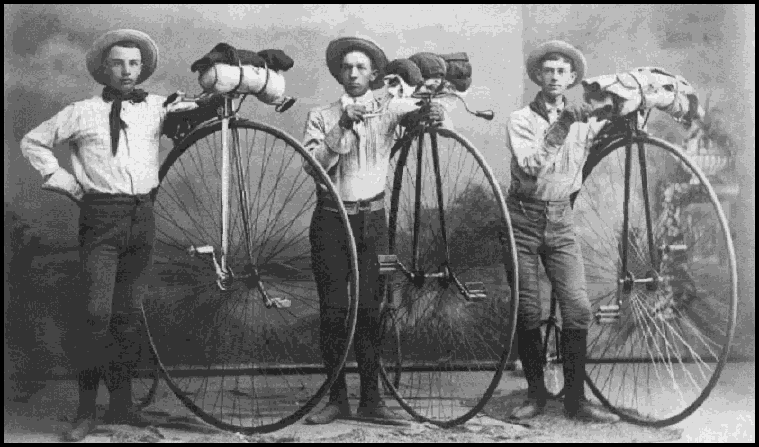 Go to the complete
Go to the complete
reviewLeopoldo Méndez
Revolutionary Art and
The Mexican Print
Deborah Caplow
(University of Texas Press)The artists of Mexico who lived through the ten-year Revolution were lucky. Not only did they survive upheaval, starvation, and the ruination of the country, but then they had the chance to experience the glorious artistic explosion that followed.We are speaking here of the years from 1920 to 1940, the time of Diego Rivera, David Siqueiros, José Orozco, Frida Kahlo, and the talented practitioners of Mexican engraving: Jean Charlot, Ramón Alva de la Canal, Pablo O'Higgins, and, probably the greatest of them all, Leopoldo Méndez.As opposed to the politically and socially castrated American artists of the 20s, Rivera, Siqueiros, Méndez et al were deeply involved in the politics of their country, if not the world. Many were also involved in government projects to bring Art to the People. In the United States, and belatedly, this was administered by the WPA. In Mexico, it was brought about through the ægis of the Ministry of Education. Méndez himself spent a year or so as a teacher in villages of Central Mexico.His main shtick, there in the sticks, was to get rid of Oscar Wilde's notion of "Art for Art's Sake." Art was, as he and Rivera and Siqueiros saw it, to free the workers, to lighten the burden of the campesinos, to uplift the poor, to unburden the rich of their excessive wealth.
Dream Street
W. Eugene Smith's
Pittsburgh Project
<Sam Stephenson, Editor
(Lyndhurst/Norton)Gene Smith worked at Life Magazine in its halcyon days --- during World War II and immediately afterwards. He was a highly-paid professional, earning the equivalent of $150,000 a year (in present dollars). He covered some of the most brutal wartime battles --- Guam, Okinawa, Saipan, the Philippines, Iwo Jima.Up until he left in 1954, he was given over fifty assignments, the kinds of projects that Life specialized in --- a country doctor in Colorado, a coal-mining town in Wales, Schweitzer's village hospital in Africa, daily life in a Spanish village, a black nurse-midwife in South Carolina. With Life's astonishing circulation --- the magazine, at its peak, had a weekly printing of 8,500,000 --- Smith's photographs were influential, highly honored, seen by millions.Go to the full
review§ § § And as BonusBelow are four special features
that offered, we believe,
an unusually felicitous collection
of drawings and photographs.Why of Whys
A collection of some of the best
of our regular "Paradoxes-of-the-Month."Twelve Great Books
Some other titles we found
to be of special merit.Art
Over 2,500 works from
cave to contemporary.Twelve Stars
A collection of a dozen reviews
which received the covetedin our General Index.
